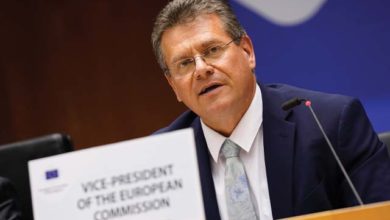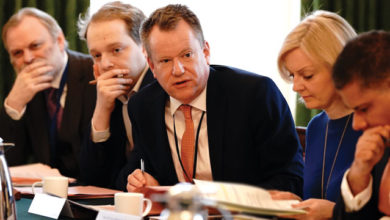The UK’s future trading options post-Brexit

Head of Europe and Trade Policy at the Institute of Directors (IoD), Allie Renison, discusses the implications on trade of the future direction of the relationship between the EU and the UK.
Outlining that the single market and the customs union represent two of three of the main economic pillars underpinning the EU, Renison offers a brief summary on what inclusion means for members.
The establishment of the customs union, a merging of the European coal and steel community post WWII, essentially brought the EU into existence. However, its two central pillars: 1) maintaining the same import tariffs on goods coming from the rest of the world; and 2) maintaining a common customs code, didn’t obviate the need for internal checks. In fact, the eradication of economic borders only happened in 1992 with the advent of the single market.
The aim in creating the single market was to enforce mutual recognition of goods and to ensure recognition of standards. Renison highlights that to some degree this initiative failed, with the result being that the past decade has seen a greater push for harmonisation, to enforce the eradication of discriminatory barriers to trading goods and services that existed between member states.
She states that given that the customs union is laid down in the treaties of the European Union, it must be understood that when the UK leaves the EU it leaves the customs union. “No matter how the UK leaves the EU, it will be getting control over its trade policy in respect of negotiating agreements,” she adds.
“The question is then, to what extent, whether there was a new comprehensive or limited customs union, the UK would have control over tariffs in those agreements.” Renison points out that while tariffs have become a minor feature of recent agreements to liberalise trade than was previously the case, they do still prove useful in extracting concessions on regulatory standards.
On the argument that the UK could trade under WTO terms, negating the need to negotiate a customs union, she says: “There is a big difference between a country that is trying to liberalise tariffs and then actually moving back from a negotiated agreement. The reason being that when you are trying to move away from an existing arrangement, the impact is much more automatically felt than, for example, a business who might make use of tariff preferences that are struck through trade agreements.”
Future trading options
Currently the single market offers businesses a space inside the internal market and avoids the need for multiple testing and licensing. For industries like pharmaceuticals or chemicals, this is critical to their trading. It is for this reason that the UK appears to be advocating for access to continue. As Renison explains, the difficulty with this scenario is that the access is predicated on regulations remaining.
While the UK sees advantage in maintaining status quo until the benefits of divergence outweigh it, the EU prefer predictability. Concerns exist from the EU that the UK Parliament will have the power to vote down new EU regulations, governing products and services being applied to the UK. Renison says: “Such an action could undo the entire market access arrangements between the UK and the EU. Such a scenario is seen as unpredictable and untenable in the EU eyes.”
She adds: “They prefer to have agreements that make pre-emptive commitments to alignment. This counters the notion that the EU doesn’t engage in a lot of cherry-picking itself. If you look at the history and litany of EU trade agreements in the past, there are different levels of access extended to different areas such as agri-food and automotive, depending on how much that country commits to aligning with EU rules.
“So, the onus is in some respects on the EU to explain what it means by the integrity of the single market and what it doesn’t like about things like the Swiss model, for example.
“If you look at the history and litany of EU trade agreements in the past, there are different levels of access extended to different areas such as agri-food and automotive, depending on how much that country commits to aligning with EU rules.”
“Some people say it is not a menu of choices but I think it is proof positive that actually there are these different arrangements that the EU has made with different countries. This is why the UK must put forward what its specific proposals are.”
Renison points out that there has been a lack of clarity in the UK’s position. Theresa May’s latest speech, which advocated mutual recognition in some areas and keeping industrial standards aligned, did not offer clarity for business planning. As she highlights, standards mean different things in different contexts. For example, the EU Standards System is a voluntary set of standard development between countries both inside and outside of the European Union across Europe but are different than the EU rules of the single market that are then proposed.
This is particularly relevant to Northern Ireland, where any divergence between UK and EU mutual recognition in areas such as agri-food would create frictions in trade across the border. Renison highlights that differences would necessitate the need for extra border customs posts. However, this will depend on the shape of the future policy agreement.
“I think the good thing about the stage that we are now at is that we are slowly but surely past this phony war period, where, because of the way the EU insisted on sequencing the negotiations there was no discussion allowed on the future relationship.
“I think in terms of the business community and the IoD engagement with government, they were precluded from having a really substantive discussion on what the future relationship would be due to the fact that the UK was focussed on the separation issues. Now a lot of what will go into the framework is up for discussion.”
Renison is aware of a quasi-political dimension to the negotiation process. Outlining her belief that a withdrawal agreement done sooner would facilitate more time for discussion on the future economic framework, she says: “There is a lot of desire from some quarters to put a lot of detail into the political framework that forms part of the withdrawal agreement. The longer that you take to map out that detail, the longer it takes to actually move into the negotiation stage.”
Discussing that this has implications for business planning, she adds: “We are trying to push IoD members to focus on the planning they can do now, mapping out what the exposure points are, in terms of supplying value chains. The difficulty is, especially for those in the SME space, is that they are used to certainty. The uncertainty around the outcome of the future relationship negotiation makes planning more difficult.”
Renison concludes by stating her belief that a solution lies in an outcomes-based approach. Highlighting that the EU approach has been very much process-driven, she foresees member-states applying pressure on EU negotiators to give more consideration to the final outcome.






